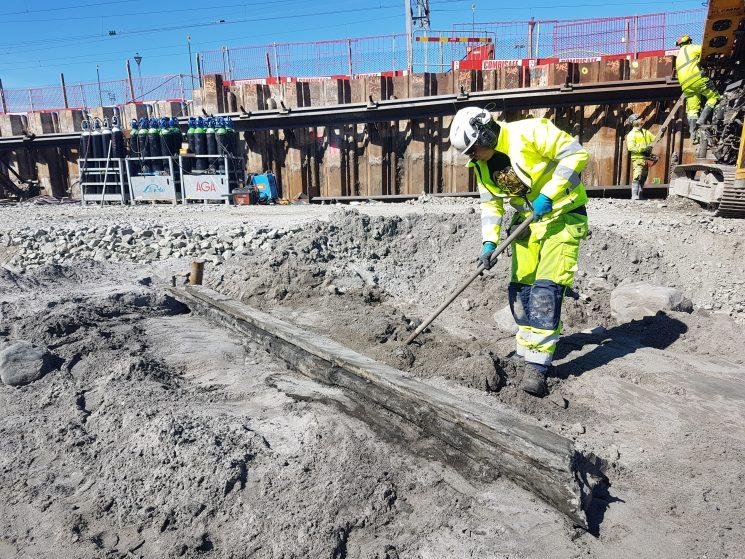Archaeologists in southwest Sweden, in the coastal town of Varberg, have unearthed six historic shipwrecks near the original shoreline during an excavation connected to the construction of the Varberg Tunnel. The archaeological remains, dating from the Middle Ages to the 17th century, provide rare evidence concerning ship construction and maritime activity over several centuries.
 Credit: Arkeologerna
Credit: Arkeologerna
The discoveries were made during archaeological investigations that began in 2019 ahead of the Varbergstunneln construction project. According to a detailed report published by Arkeologerna, with fieldwork carried out by the Bohuslän Museum, Visual Archaeology, and Cultural Environment Halland, the shipwrecks illustrate a diverse array of building methods and marine uses.
One of the most important finds is Varberg Wreck 2, a 1530s clinker-built oak sailing vessel. Clinker boat construction, using overlapping planks, was a common technique in northern Europe that produced a ribbed, stepped form for ships. Well-preserved, Wreck 2 retained cohesive structural elements, including two starboard hull sections and an item known as a berghult—a protective strip along the hull used during docking.
 Credit: Arkeologerna
Credit: Arkeologerna
According to The Archaeologists (Arkeologerna), the berghult is usually ᴀssociated with carvel-built ships, but it is also found on clinker-built vessels. There are also traces of fire on the berghult, which is interesting.” This raises questions about whether the ship was damaged or intentionally burned before it sank.
Wreck 5, also clinker-built, dates to the 17th century, a time when Sweden was establishing its presence in the Baltic Sea and beyond. Although less preserved due to rushed recovery during construction activity, it was built using locally felled oak and likely sailed between medieval Varberg and nearby Ny Varberg, a 15th-century town abandoned in the early 1600s.
 Credit: Arkeologerna
Credit: Arkeologerna
Varberg Wreck 6 was the only carvel-built ship of the six. The use of planks laid edge to edge in carvel construction yields a smooth hull. The vessel showed traces of Dutch shipbuilding and had a rabbeted keel preserved—the only such find in the excavations. Dendrochronological analysis, unfortunately, could not determine the exact age or timber origin of Wreck 6.
The remaining wrecks, identified as Varbergsvraken 3 and 4, are 14th-century cogs—flat-bottomed ships commonly used in medieval Europe for trade. Their analysis is still underway, but researchers anticipate the findings will offer valuable information about commercial networks and maritime life during the Middle Ages.
 Credit: Arkeologerna
Credit: Arkeologerna
Schager emphasized the broader significance of the find, saying, “In recent years, it has become increasingly common to find preserved shipwreck remains on the West Coast. This is due to large infrastructure projects that often take place in areas that, during the Middle Ages and early modern period, were underwater or part of harbor zones.”
With ongoing investigation of the cogs and continued documentation efforts, the Varberg wrecks are turning out to be Sweden’s most important archaeological maritime finds in recent decades.
More information: Arkeologerna





